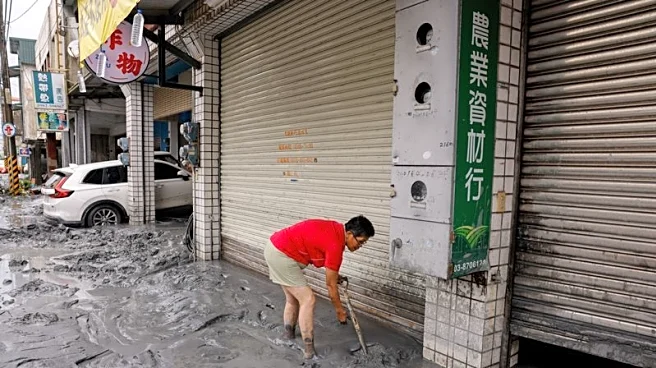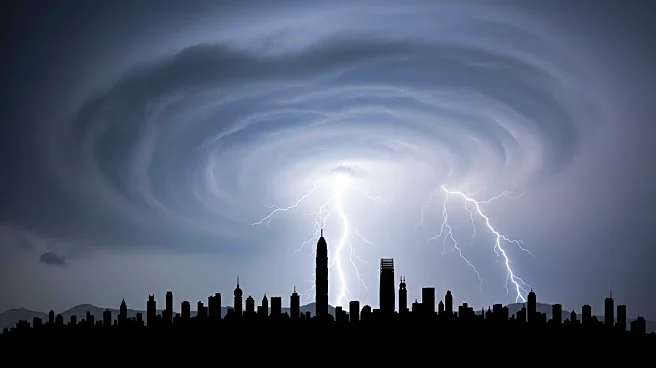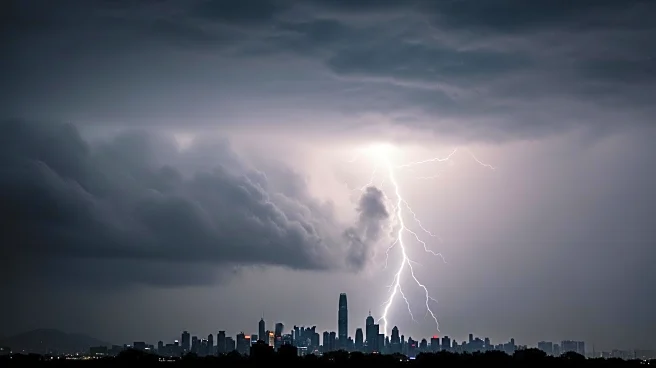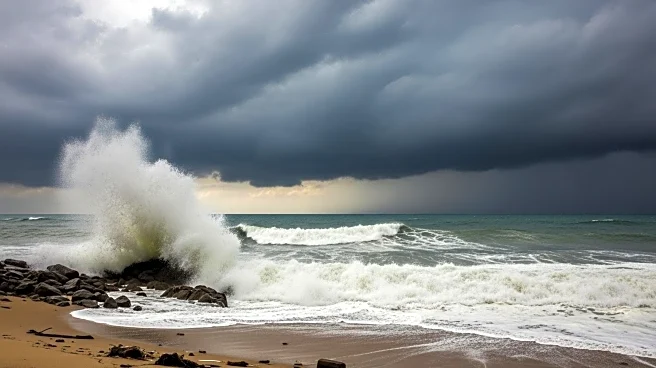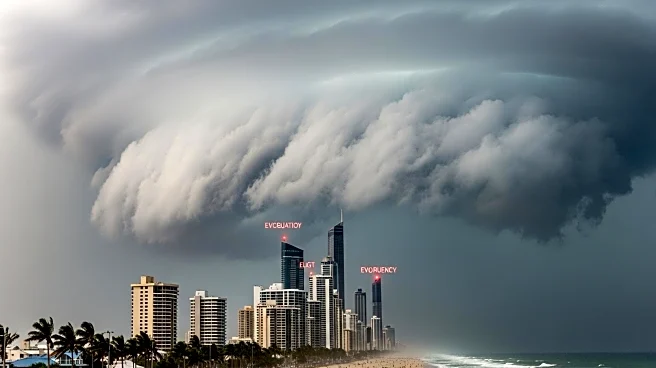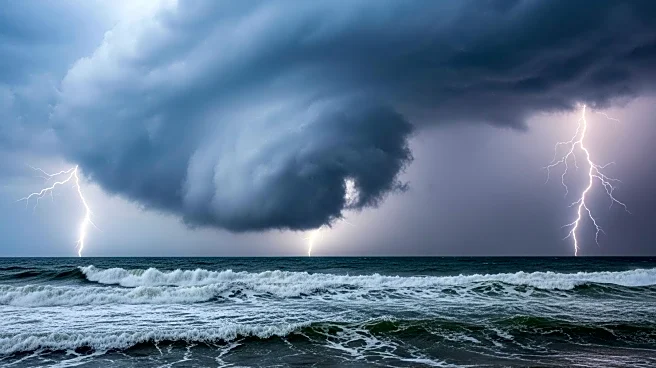What's Happening?
Super Typhoon Ragasa has caused significant destruction in Taiwan, particularly in the eastern county of Hualien. The typhoon led to the bursting of a barrier lake, which released a massive amount of water, resulting in deadly floods. The lake, formed after landslides triggered by a previous typhoon, held approximately 91 million tonnes of water. When it burst, it unleashed a torrent comparable to a tsunami, killing at least 14 people and injuring 32 others. Many residents, especially the elderly, were caught off guard as they received no immediate warning from authorities. The floodwaters reached as high as the second floor in some areas, causing extensive damage to homes and infrastructure.
Why It's Important?
The impact of Super Typhoon Ragasa highlights the vulnerability of regions prone to natural disasters and the importance of effective emergency response systems. The lack of timely warnings and mandatory evacuations contributed to the severity of the disaster, underscoring the need for improved communication and preparedness strategies. The event has significant implications for Taiwan's emergency management policies and could lead to reforms aimed at better protecting residents, especially in remote and aging communities. The disaster also poses challenges for the local economy, particularly the tourism industry, which has already been affected by previous calamities.
What's Next?
In the aftermath of the disaster, local and central government officials are likely to face scrutiny over their handling of the emergency. There may be calls for investigations into the adequacy of the warnings and evacuation procedures. Efforts to rebuild and support affected communities will be crucial, with potential changes in policy to enhance disaster preparedness and response. The academic community may also push for more research and monitoring of barrier lakes to prevent similar incidents in the future.
Beyond the Headlines
The disaster raises questions about the challenges faced by aging populations in rural areas during emergencies. Many elderly residents rely on traditional communication methods and may not have access to timely information. This highlights the need for tailored strategies to ensure their safety. Additionally, the event may prompt discussions on the environmental impact of typhoons and the formation of barrier lakes, as well as the long-term implications for Taiwan's infrastructure and natural disaster resilience.

